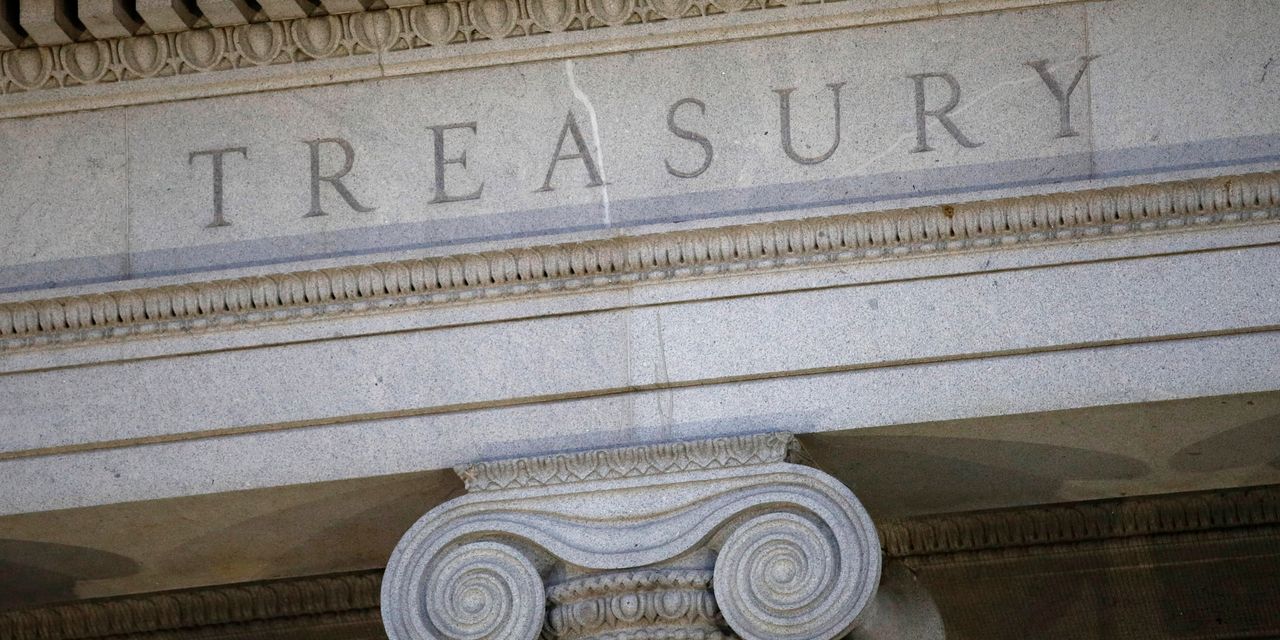
In One Chart: $7.6 trillion of publicly held U.S. government debt matures in next 12 months. What does the Treasury do next?
Patrick Semansky/APClose to a third of all publicly-held, outstanding U.S. government debt is set to mature in the next 12 months, raising questions about where Treasury might go from there to finance the government’s borrowing needs. A total of $7.6 trillion will mature in the next year, approaching the level seen in early 2021, according to a chart provided by Torsten Slok, the New York-based chief economist at asset management firm Apollo. In an online post, Slok said that’s been a source of upward pressure on rates, though strategists countered by saying such a statement is hard to prove.Source: Treasury, BEA, Haver Analytics, Apollo Chief EconomistConcerns about Treasury’s increased issuance of T-bills and the potential for volatility or market disruptions emerged following the debt-ceiling fight in May, when angst over the government’s ability to pay all its bills pushed yields above 7% on debt maturing in early June. Ultimately, though, T-bills have proven to be “an effective absorber of unexpected issuance needs” and the Treasury Borrowing Advisory Committee, a group advisers to the Treasury Department, “expects that can continue given current levels of demand,” Deirdre K. Dunn and Colin Teichholtz, the chair and vice chair of TBAC, wrote in a letter to Treasury Secretary Janet Yellen released last month. Even with modest coupon increases, the T-bill share of outstanding debt was expected to rise above 20% going forward, the top of TBAC’s recommended range. Though the advisory group said it was comfortable with running a bit above 20% for some time, it also recommended that Treasury take steps toward normalizing that level over time.“The issue being raised by TBAC is whether we are issuing too many bills and may have hit a critical threshold,” said Ben Emons, senior portfolio manager and head of fixed income at NewEdge Wealth in New York. “The real story is what Treasury will do next. This week brings 10- and 30-year auctions and the market is going to have to digest more supply. What is Treasury going to do from there? Issue more long-term bonds or less? The minutes of TBAC’s August meeting left the impression that Treasury is leading toward issuing more long-term debt, but we don’t know.” On Monday, Treasury yields moved broadly higher after Bank of Japan Gov. Kazuo Ueda hinted at a possible end to negative interest-rate policy. Meanwhile, all three major U.S. stock indexes DJIA SPX COMP also headed higher in late-morning trading. Treasury’s $35 billion auction of 10-year securities takes place on Tuesday, followed by Wednesday’s $20 billion 30-year sale.“There’s so much money sitting or moving to cash and money-market funds that Treasury has been able to issue a lot of bills without any sort of negative impact on market prices,” said Lawrence Gillum, a Charlotte, North Carolina-based fixed-income strategist for broker-dealer LPL Financial. “There’s a lot of supply coming to the market at a time when central bankers aren’t buying government debt, but our argument has been that there’s always going to be a buyer of Treasurys as long as Treasurys offer a risk-free rate. The only question is the price.”
Market Pulse Stories are Rapid-fire, short news bursts on stocks and markets as they move. Visit MarketWatch.com for more information on this news.


